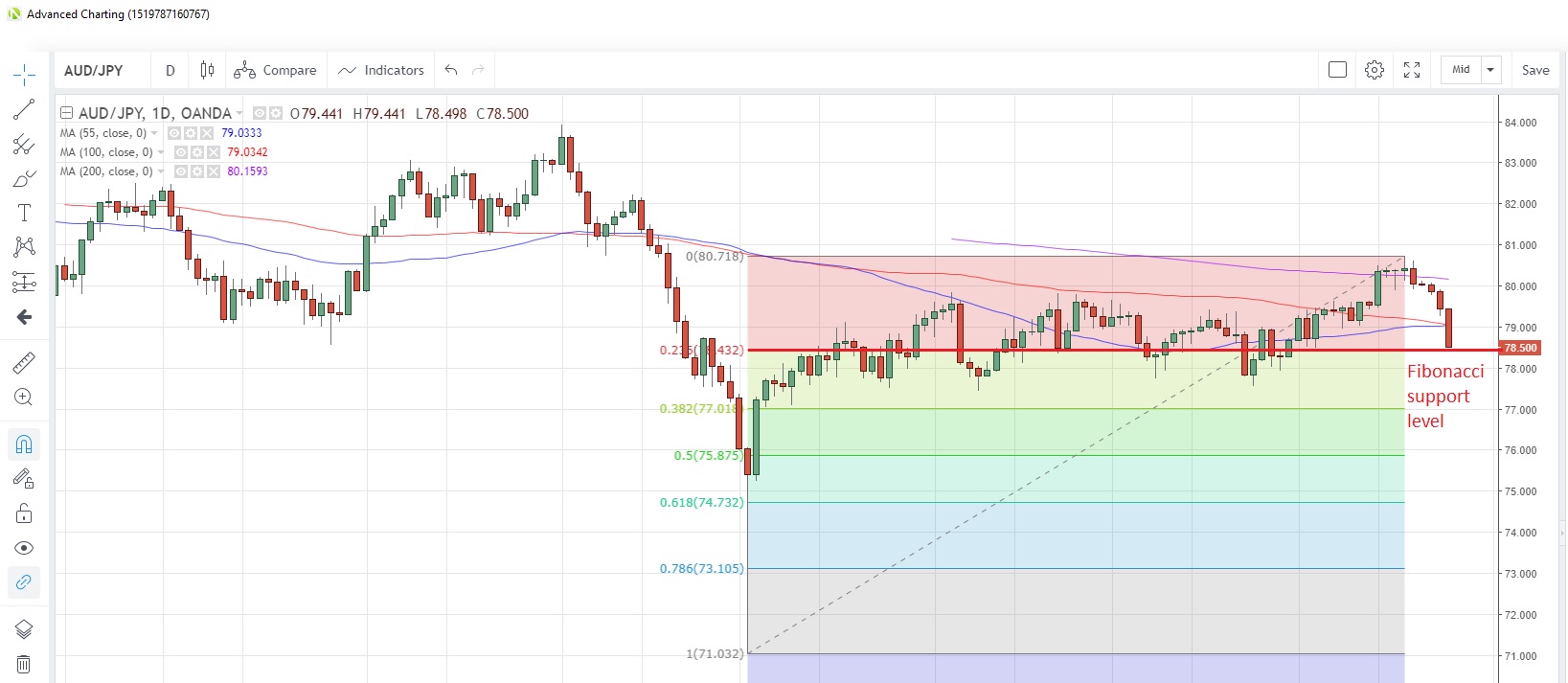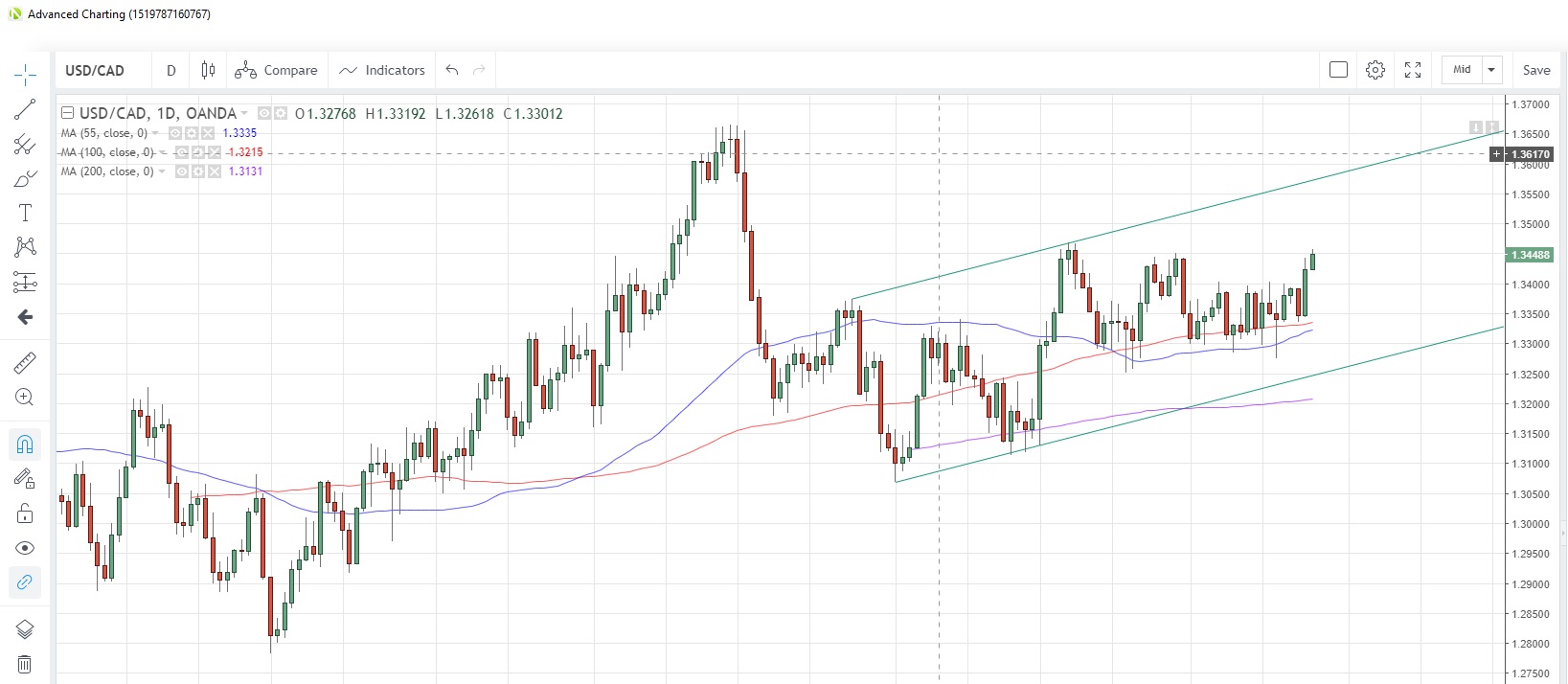AUD/USD at a six-week low
Australia’s headline CPI fell to 1.3% y/y in Q1, matching the lowest since Q3 2016, led by lower prices for petrol, travel and accommodation. This was the third consecutive quarter where price gains have been below the RBA’s 2-3% target range. The RBA’s trimmed mean CPI rose 1.6% y/y, slipping from +1.8% in Q4.
The Aussie was marked lower after the data, with AUD/USD falling as much as 0.92% to 0.7036, the lowest in six weeks, while AUD/JPY shed as much as 0.96% to a three-week low of 78.61, easily slicing through the 55- and 100-day moving averages at 79.035. Some Fibonacci support comes in at 78.432, the 23.6% retracement of the January-April rally.
AUD/JPY Daily Chart
Source: OANDA fxTrade
German sentiment mixed
The first German economic releases of the week sees the IFO surveys in the spotlight. The expectations index snapped a six-month weakening phase last month and economists expect that trend to continue into April. Forecasts are for a 96.1 reading from 95.6. The business climate is also expected to improve with a 99.9 reading from 99.6, but the current assessment is still seen weaker at 103.6 from 103.8.
A dovish Bank of Canada?
Given the shift in the rate outlook for the Fed this year, a number of central banks have also switched to a more dovish bias. The Bank of Canada is probably going to join this club too, amid ongoing trade tensions and a weaker outlook for the domestic economy.
The Canadian dollar has been under pressure and not even a 4% spike in oil prices has been able to support the Loonie. USD/CAD touched the highest since March 8 this morning and is now at 1.3450
USD/CAD Daily Chart


